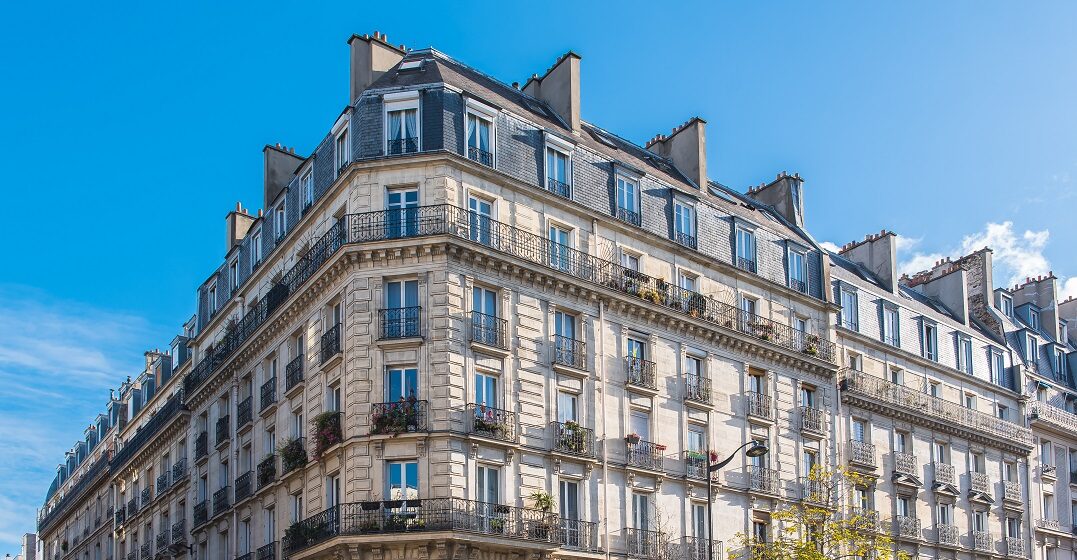5 popular styles of French architecture

France is one of the most popular tourist destinations for many reasons, one of which is its architecture. The country is divided into 13 regions, all of which have their own distinct styles and buildings. However, there are various French architecture styles that appear across the country, regardless of region. So we’ve put together a list of five popular styles of French architecture for you to discover. Plus, we’ve included some useful French building vocabulary so you can improve your French language skills too.
Learn languages at your pace
1. Gothic
Gothic French architecture was very popular during the Medieval period, appearing in France around 1100-1500 AD. It is characterized by powerful structures with pointed arches, rib vaults, stained-glass windows and flying buttresses. The decoration is very ornate and detailed, with the addition of gargoyles.
The best example of this French architectural style is the iconic Notre Dame Cathedral in Paris, however gothic cathedrals and buildings can be found all over the country. Their style is spectacular and impressive, often dominating the area in which they stand.
2. Renaissance
Moving on a few centuries, the Renaissance style of French architecture and buildings appeared in the late 15th century, and can be divided into two periods. The first period was highly influenced by the Italian Renaissance style, whereas the second period provided a more distinctly French style of architecture. Common characteristics include symmetry and proportion, repetitive facades, sloping roofs and stone or brick buildings.
The Loire Valley region is renowned for its castles, many of which were built during the Renaissance period and thus, are in this French architectural style.
Learn languages at your pace
3. Baroque
The word Baroque was used interchangeably in the 17th century for a variety of creative feats, from music and art to poetry and painting. Baroque architecture was highly ornate, dramatic and detailed, however French Baroque architecture veered off in its own direction. Characteristics such as high domes and twisted columns were used. Many French buildings were created for King Louis XIV, hence why it is often associated with him, and why French Baroque buildings are opulent, grand and fit for a king.
There are many examples of French Baroque architecture, including the dome of Les Invalides and the famous Grand Trianon of the Palace of Versailles.
4. Haussmann
If you ask any Parisian what they look for in a home, they will often mention Haussmannian buildings. Georges Eugène Haussmann was a 19th century French official who created a program in Paris to redo buildings and spaces, later known as the Haussmannian style of buildings. These French buildings have stone facades, ornamental black wrought iron balconies (usually on the 2nd floor) and French double windows. Walking through Paris, it is impossible to miss this wonderful French architectural style. The easiest way to spot a Haussmannian building is by the use of balconies on the second and fifth floors.
5. Regional French architecture
Haussmannian buildings are specific to Paris but there are other French styles of architecture that are associated with individual regions. For example, in Normandy and Alsace, you will find maisons à colombage (half-timbered houses), which are traditional homes with visible wooden frameworks covered with lime or sand.
In the western part of the country, the Charentaise houses are very common. They are stone, rectangular French buildings with two or three stories, usually facing south.
Moving further south, in Provence, you can find the mas, traditional stone buildings that are placed in the middle of large areas of land. Traditionally, the ground floor was for animals and the upper floor was for the family.
French building terms
If you’re planning on exploring French architecture or buying a house, here are some useful French building terms:
| ENGLISH | FRENCH |
| A house | Une maison |
| An apartment | Un appartement |
| A castle | Un château |
| A church | Une église |
| Floor (first floor, second floor, etc.) | Un étage (premier étage, deuxième étage, etc.) |
| Architecture | L’architecture |
| A balcony | Un balcon |
| A facade | Une facade |
| Stained glass | Un vitrail |
| A belltower | Un clocher |
| A gargoyle | Une gargouille |
Architecture: A part of French history
French architectural styles often link with the history of the country. It’s worth researching them for the city you are planning on visiting, as there’s nothing better than spending a lovely, sunny afternoon strolling around a beautiful French city and admiring the impressive French architecture and buildings.













